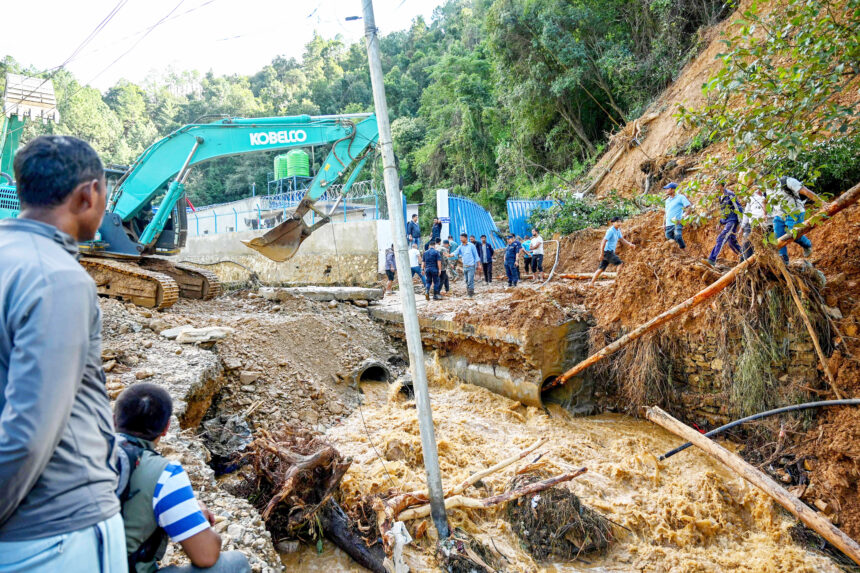KAVRE – Survivors of the monsoon floods that ravaged Nepal at the weekend criticised the government yessterday for inadequate relief efforts during a disaster that killed at least 225 people. Deadly floods and landslides are common across South Asia during the monsoon season from June to September, but experts say climate change is making them worse.
Entire neighbourhoods in the capital Kathmandu were inundated at the weekend, along with villages in remote pockets of
the Himalayan country that were still awaiting relief efforts.
“There is no road, so no one has come,” Mira KC, who lives in a village in Kavre district to Kathmandu’s east, told AFP.
“Even if they do, those who died are dead already, and the damage is done. All they will do is offer condolences, what will they do?”
The floods disproportionately hit Kathmandu’s poorest residents living in haphazard slums along the banks of the Bagmati river and its tributaries, which run through the city.
Slum resident Man Kumar Rana Magar, 49, told AFP that authorities had provided shelter at a school for him and his neighbours after their homes were inundated.
However, he said they had been forced to leave before they were ready to return to their homes when the school reopened for classes.
“We are so close to the seat of the government. If they cannot take care of the poor this close, what will they do about others?” he asked. At least 225 people were killed in the floods, with another 24 still missing, according to police. More than 4,000 others were rescued.
Nepal’s weather bureau said preliminary data showed 240 millimetres (9.4 inches) of rain fell in the 24 hours to Saturday morning, the biggest single-day downpour in more than two decades.
Experts said authorities did not prepare adequately for the disaster, despite forecasts of intense storms.
“Precautions that should have been taken were ignored,” climate expert Arun Bhakta Shrestha, of Kathmandu-based think tank International Centre for Integrated Mountain Development, told AFP.
Nepali disaster management expert Man Bahadur Thapa said gaps in coordination and resources had also hindered the rescue process. “We could have saved a lot more lives if we prepared and built the capacity of our responders,” he told AFP.
Prime Minister KP Sharma Oli was visiting the United States during the floods, and was roundly criticised on social media for not cutting his trip short when the scale of the disaster became clear.
“At a sensitive time like this, we all have to work together realistically, not criticise just for the sake of it,” he told reporters on his return to Nepal on Monday.
Monsoon rains bring widespread death and destruction in the form of floods and landslides across South Asia every year.
Experts say climate change has worsened their frequency and intensity.
More than 300 people have been killed in rain-related disasters in Nepal this year.
– Nampa/AFP


